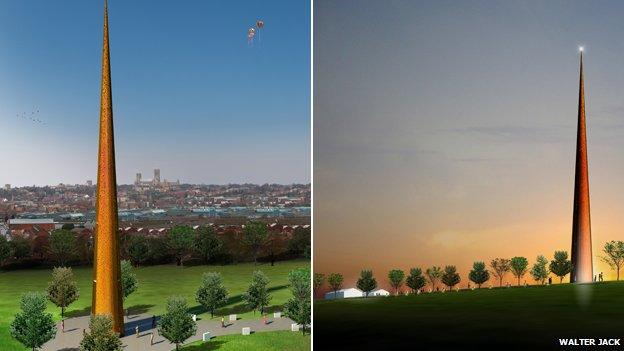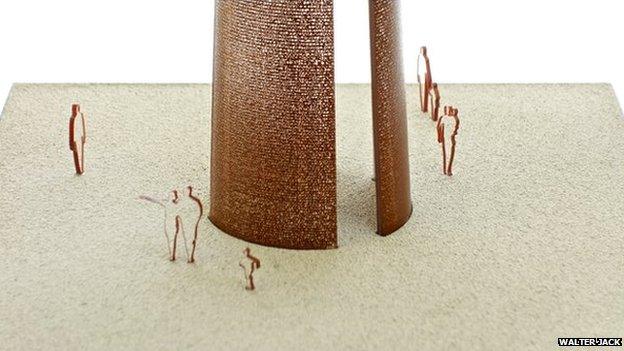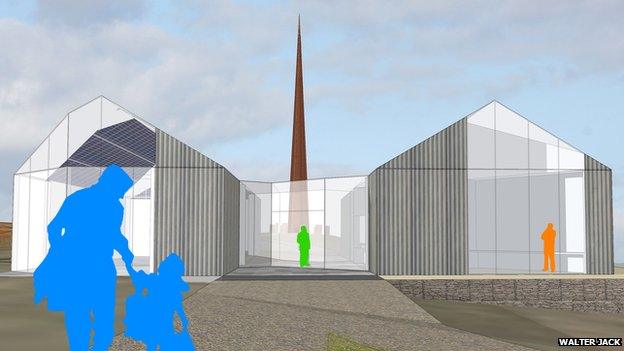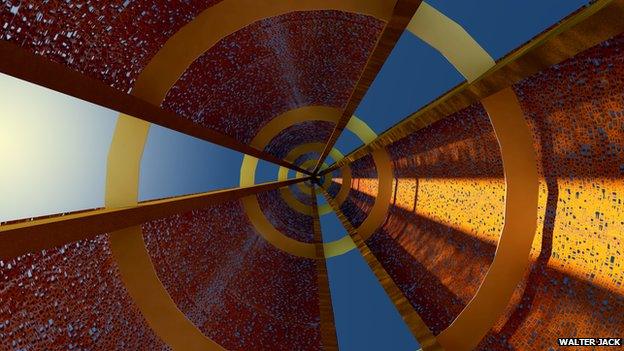Bomber Command memorial in Lincoln: Steel spire design chosen
- Published

The Spire of Names will be positioned on Canwick Hill

The memorial will have all the names of the aircrew who died in Bomber Command missions

The design also includes a visitor centre telling the story of Bomber Command

The organisers said the memorial will have a 125 year lifespan
A design has been chosen for a memorial to the 25,000 Bomber Command airmen based in Lincolnshire who died in World War II.
The Spire of Names design by Walter Jack was picked by the Lincolnshire Bomber Command Memorial Trust.
The 50m (164ft) steel spire, featuring the names of all 25,000 airmen, was chosen from a shortlist of three.
It will be built on Canwick Hill opposite Lincoln Cathedral and feature a visitor centre and two gardens.
In June 2012, a £6m memorial to all the 55,573 airmen of Bomber Command who died during World War II was unveiled by the Queen in London but this is the first dedicated to those based in Lincolnshire.
Nicky Barr, from the Lincolnshire Bomber Command Memorial Trust, said: "It [the Lincolnshire design] was really, in the end, a balance of sustainability - both in build and longevity.
"The spire of names has a lifespan of 125 years so really it is a design for future generations."
The organisers asked for three different designs which went on display around the county and on Friday unveiled the winning memorial, by structural artist Walter Jack, along with design firm Atkins.
There will also be an interpretation centre to tell the story of Bomber Command at the site, as well as a tribute to the crew members who survived.
Mr Jack said: "I was struck firstly by the sheer numbers who gave their lives as volunteers to Bomber Command - and secondly by the stories of huge bravery and courage.
"If we can build something half-way worthy of these men, we will have done well."
The memorial was the idea of the Lord Lieutenant of Lincolnshire, Tony Worth, whose father served with the RAF through most of the war.
Lincoln Cathedral has been chosen as the location because it was used by many pilots and navigators as a beacon to let them know they had returned home safely.
- Published6 April 2013
- Published27 June 2012
- Published21 May 2012